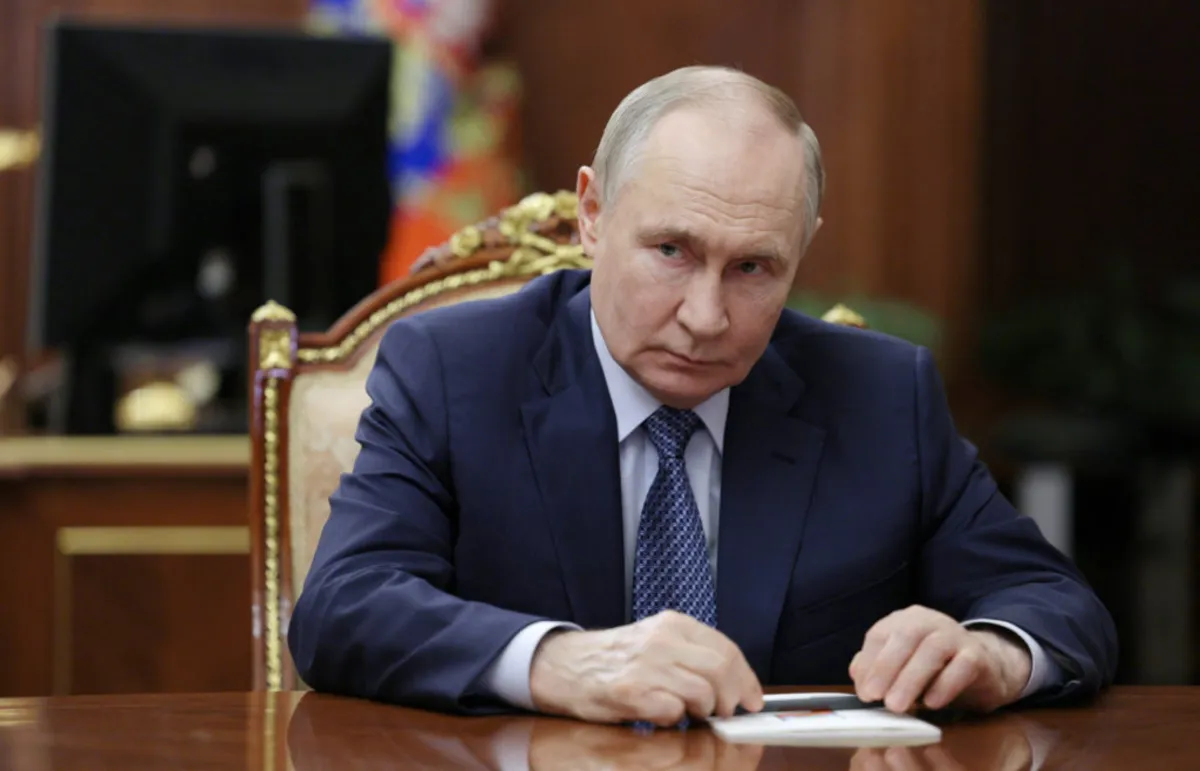
The ongoing conflict in Ukraine has seen an array of threats, pressures, and ultimatums, yet Russian President Vladimir Putin remains steadfast in his uncompromising demands. As tensions escalate, there are growing concerns that a forthcoming summit with U.S. President Donald Trump in Alaska could be leveraged by Putin to pressure Kyiv into accepting unfavorable terms. These maximalist demands underscore Putin's unwavering commitment to achieve the objectives set forth during the full-scale invasion of Ukraine, which began on February 24, 2022.
Putin perceives the potential meeting with Trump as an opportunity to negotiate a broad agreement that would not only solidify Russia’s territorial gains but also prevent Ukraine from joining NATO and hosting any Western military presence. This approach aims to gradually pull Ukraine back into Russia's sphere of influence. Observers note that Putin believes time is on his side, as the beleaguered Ukrainian forces are struggling against Russian advances along a front line exceeding 1,000 kilometers (over 600 miles), compounded by relentless missile strikes and drone attacks on Ukrainian cities.
In contrast, Ukrainian President Volodymyr Zelenskyy has maintained a firm stance, agreeing to a ceasefire proposed by Trump while reiterating the country's commitment to NATO membership and rejecting any acknowledgment of Russia’s annexation of Ukrainian territories. European leaders have rallied in support of Ukraine, asserting that any resolution to the conflict must include Kyiv's participation. Zelenskyy expressed gratitude to European allies in a recent post, emphasizing that "the end of the war must be fair, and I am grateful to everyone who stands with Ukraine and our people."
During discussions in Istanbul in June, Russia presented Ukraine with two proposals for establishing a 30-day ceasefire. The first proposal required Ukraine to withdraw its forces from Donetsk, Luhansk, Zaporizhzhia, and Kherson—regions that Moscow illegally annexed in September 2022 but has not fully captured. The second, a "package proposal," called for Ukraine to halt mobilization efforts, freeze Western arms deliveries, and prohibit third-country forces on its territory. Furthermore, Moscow suggested Ukraine end martial law and conduct elections, after which a comprehensive peace treaty could be signed.
Russia's vision for peace includes the "international legal recognition" of its annexations of Crimea and the four regions acquired in 2022. The Kremlin demands that Ukraine declare a neutral status between Russia and the West, abandon its NATO ambitions, limit its military size, and recognize Russian as an official language. Additionally, Russia insists on banning the "glorification and propaganda of Nazism and neo-Nazism" and dissolving nationalist groups, despite these claims being widely dismissed by Kyiv and its Western allies.
In response, Ukraine's memorandum emphasized the need for a full, unconditional 30-day ceasefire as a prerequisite for peace negotiations. Kyiv categorically rejected Russia's demands for neutral status, viewing them as an infringement on its sovereignty. Ukraine asserted its right to choose alliances, with NATO membership contingent upon consensus within the alliance. The Ukrainian proposal also called for the return of all deported children and a complete prisoner exchange, while stating that the current line of contact should serve as a baseline for negotiations.
President Trump has previously expressed admiration for Putin, often echoing the Kremlin's narratives regarding the conflict. This has raised alarms among Ukrainian officials and European allies, especially given Trump's willingness to meet with Putin without Zelenskyy present. Trump hinted at the possibility of "swapping territories" as part of a peace deal, a suggestion that has fueled concerns that he may inadvertently support Russia's position at Ukraine's expense.
As Putin continues his military operations, he has warned that Ukraine will face harsher conditions for peace if it does not concede to Russia's demands. Observers suggest that Putin could leverage recent military gains to pressure Ukraine into accepting a deal that is less favorable to its interests. Sam Greene from King’s College London noted, “Putin could accept a ceasefire as long as it maintains his control, with no real deterrence against future aggression.”
Despite the potential for a ceasefire or peace agreement, experts like Tatiana Stanovaya from the Carnegie Russia and Eurasia Center argue that Putin's core demands remain unchanged. She cautions that although the Russian side may present its conditions in various ways to create the illusion of flexibility, the fundamental request remains the same: Ukraine must cease resistance, the West must stop arms supplies, and Kyiv must accept Russia's terms. The likelihood of a successful peace effort appears slim, with the conflict poised to continue in a state of flux between open warfare and simmering tension.
As the international community watches closely, the outcomes of the impending Trump-Putin summit and the ongoing negotiations will significantly shape the future of Ukraine and its quest for sovereignty.